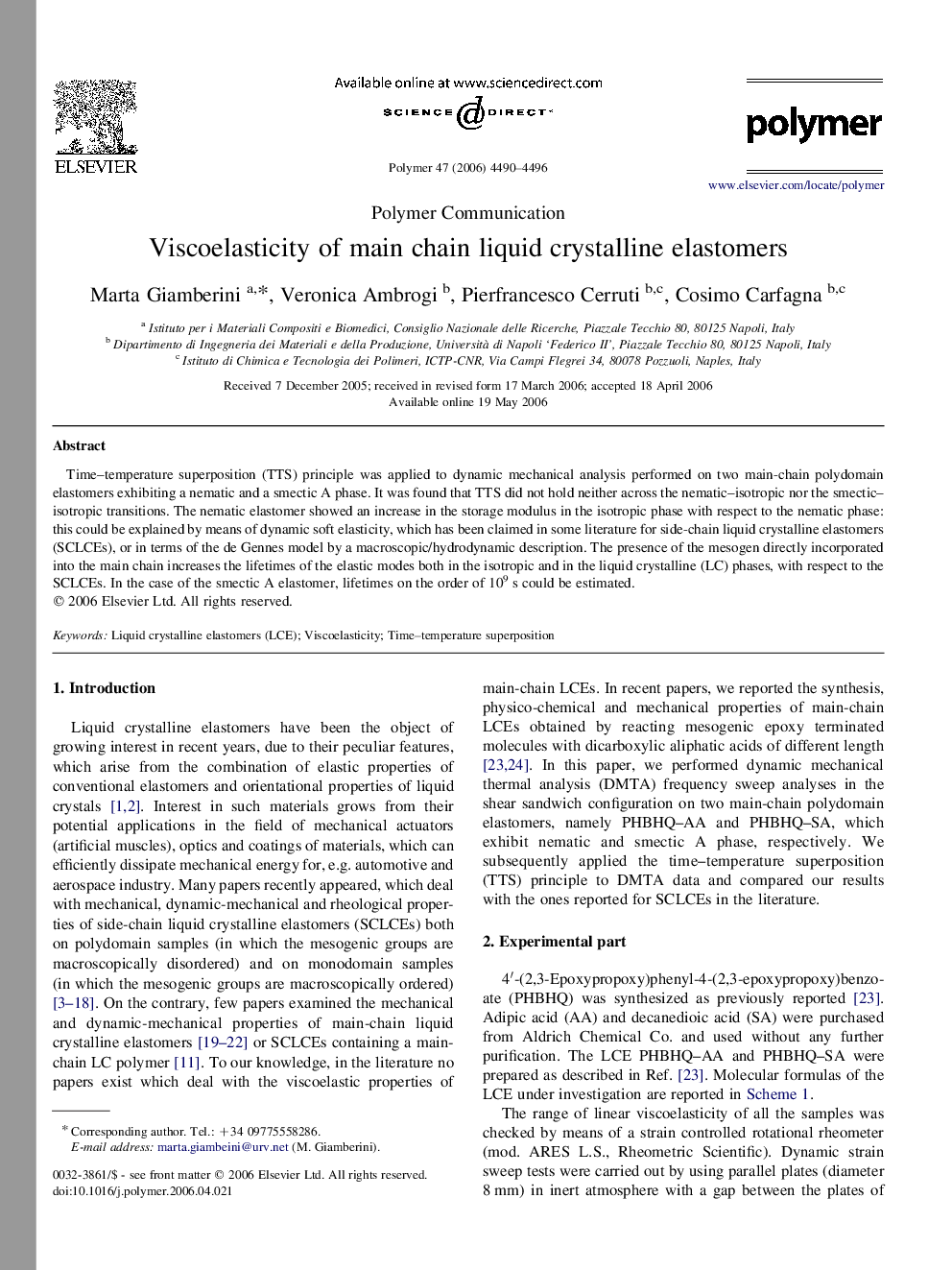| Article ID | Journal | Published Year | Pages | File Type |
|---|---|---|---|---|
| 5189485 | Polymer | 2006 | 7 Pages |
Abstract
Time-temperature superposition (TTS) principle was applied to dynamic mechanical analysis performed on two main-chain polydomain elastomers exhibiting a nematic and a smectic A phase. It was found that TTS did not hold neither across the nematic-isotropic nor the smectic-isotropic transitions. The nematic elastomer showed an increase in the storage modulus in the isotropic phase with respect to the nematic phase: this could be explained by means of dynamic soft elasticity, which has been claimed in some literature for side-chain liquid crystalline elastomers (SCLCEs), or in terms of the de Gennes model by a macroscopic/hydrodynamic description. The presence of the mesogen directly incorporated into the main chain increases the lifetimes of the elastic modes both in the isotropic and in the liquid crystalline (LC) phases, with respect to the SCLCEs. In the case of the smectic A elastomer, lifetimes on the order of 109Â s could be estimated.
Related Topics
Physical Sciences and Engineering
Chemistry
Organic Chemistry
Authors
Marta Giamberini, Veronica Ambrogi, Pierfrancesco Cerruti, Cosimo Carfagna,
